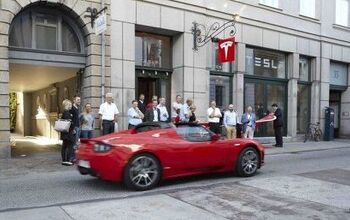Redflex Under Fire

Twenty-fifteen was a tough year for Redflex, the well-known and thoroughly-loathed Australian purveyor of corruption, bribery, and traffic-ticket cameras.
Although the firm’s US arm obtained a small victory in the $300 million lawsuit filed against it by the city of Chicago, getting the case transferred to federal court, Chicago is expanding the scope of its lawsuit in response. Meanwhile, smaller municipalities are abandoning Redflex in droves — and the numbers make it easy to see why.
Chicago has amended its lawsuit against Arizona-based Redflex Traffic Systems to include its parent, Australian corporation Redflex Holdings Limited. How easy is it to sue an Australian firm? How easy is it to collect a judgment against said firm? Probably not that easy. Still, the city’s move shows that it’s in deadly earnest about using the contents of Redflex’s pockets to line its own.
In my hometown of Columbus, Ohio, unsealed documents show that Redflex officials took a federal slap on the wrist for successfully bribing city officials to agitate for red-light cameras in general and Redflex products in particular.
Now Austin, Texas bedroom community Round Rock has thrown Redflex out, but for a very different reason: the cameras are enriching Redflex but doing virtually nothing for the municipality. These are the numbers:
Over the past four years, the city collected $2.5 million in fines. Slightly more than $2 million of that went to Redflex to install and operate the cameras, and $105,858 went toward city expenses.
That left $353,249 in net revenue for the city. But half of that amount went to the state, leaving the city with about $176,624.
And as for safety?
But data from the red-light cameras showed there were no trends either way on drivers’ behavior at the intersections. For example, city data show citations for red-light runners at RM 620 and Deepwood Drive would increase and decrease from one month to the next.
“It was impossible to determine a trend,” he said. “And if you didn’t see any significant change in traffic behavior, then what was the point?”
Presumably, the true point was to collect more than $176K out of $2.5M.
Throughout Texas, eyebrows have been raised as the number of collisions at some monitored intersections has risen while the funds collected by the state from red-light violations have been used for purposes other than the safety and education programs for which they were originally earmarked.
Nor are the problems limited to Texas; New Jersey ended its pilot program and sent Redflex home last year after Redflex took almost half of the revenue in a statewide program that saw an increase in pedestrian injuries.
Those of us who take some pleasure in watching this firm crash and burn can obtain additional enjoyment from the fact that Redflex has basically shut down its media site. No more “big wins” for Redflex. Yet the company has one more idea up its sleeve: a camera system that tickets drivers for passing a school bus. If you know the Redflex story up to this point, you won’t be surprised to hear that a significant portion of the ticketed ‘violations’ come from drivers passing a bus during the deployment of the sign, or during the first second after it was deployed.
In a way, it’s ironic that Redflex is pinning its last hopes on the school-bus system. After all, as it is likely to discover in court, when federal judges have to choose between torpedoing a foreign corporation’s local subsidiary or ruling against Fortress Chicago, it tends to be the businessmen who get thrown under the bus.
[Image courtesy of CameraFraud]

More by Jack Baruth
Latest Car Reviews
Read moreLatest Product Reviews
Read moreRecent Comments
- Analoggrotto I don't see a red car here, how blazing stupid are you people?
- Redapple2 Love the wheels
- Redapple2 Good luck to them. They used to make great cars. 510. 240Z, Sentra SE-R. Maxima. Frontier.
- Joe65688619 Under Ghosn they went through the same short-term bottom-line thinking that GM did in the 80s/90s, and they have not recovered say, to their heyday in the 50s and 60s in terms of market share and innovation. Poor design decisions (a CVT in their front-wheel drive "4-Door Sports Car", model overlap in a poorly performing segment (they never needed the Altima AND the Maxima...what they needed was one vehicle with different drivetrain, including hybrid, to compete with the Accord/Camry, and decontenting their vehicles: My 2012 QX56 (I know, not a Nissan, but the same holds for the Armada) had power rear windows in the cargo area that could vent, a glass hatch on the back door that could be opened separate from the whole liftgate (in such a tall vehicle, kinda essential if you have it in a garage and want to load the trunk without having to open the garage door to make room for the lift gate), a nice driver's side folding armrest, and a few other quality-of-life details absent from my 2018 QX80. In a competitive market this attention to detai is can be the differentiator that sell cars. Now they are caught in the middle of the market, competing more with Hyundai and Kia and selling discounted vehicles near the same price points, but losing money on them. They invested also invested a lot in niche platforms. The Leaf was one of the first full EVs, but never really evolved. They misjudged the market - luxury EVs are selling, small budget models not so much. Variable compression engines offering little in terms of real-world power or tech, let a lot of complexity that is leading to higher failure rates. Aside from the Z and GT-R (low volume models), not much forced induction (whether your a fan or not, look at what Honda did with the CR-V and Acura RDX - same chassis, slap a turbo on it, make it nicer inside, and now you can sell it as a semi-premium brand with higher markup). That said, I do believe they retain the technical and engineering capability to do far better. About time management realized they need to make smarter investments and understand their markets better.
- Kwik_Shift_Pro4X Off-road fluff on vehicles that should not be off road needs to die.


































Comments
Join the conversation
I don't understand the Redflex monopoly. These things were never more than medium tech to begin with, and anything important went off-patent years ago. These things should be available off the shelf and something a town could install and calibrate conservatively and still come out way ahead.
Red light and speed cameras are everywhere out here in Alberta. They'll even stick them in unmarked vehicles at the roadside. I once saw a late model Ram with an ATV in the bed that was being used for speed camera duty. A high quality Radar/Laser detector with GPS locations for the stationary cameras is a savior.